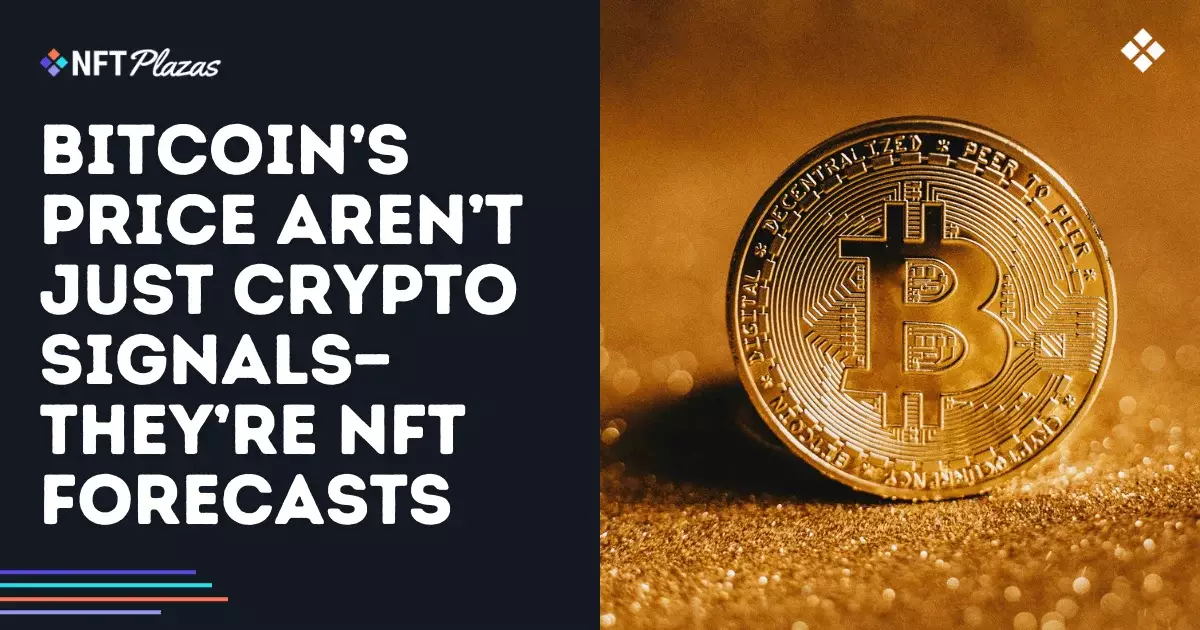Bitcoin stands as the cornerstone of the cryptocurrency realm, a beacon that not only dictates market trends but also highlights the intricate web linking various digital assets. As the oldest and most widely recognized cryptocurrency, Bitcoin’s price fluctuations affect more than just its own value—they send ripples through the entire NFT industry. It’s crucial to recognize that the volatility in Bitcoin often serves as a litmus test for the health of NFT projects. For anyone involved in this dynamic marketplace, understanding this interplay is not merely an advantage; it’s a necessity.
When Bitcoin reaches new heights, the NFT market seems to vibrate in sync, attracting legions of new entrants eager to join the frenzy. For instance, the meteoric rise of Bitcoin past $40,000 in early 2021 was directly correlated with the astronomical success of NFTs, such as Beeple’s sell-out at Christie’s. While these moments are exciting, they reveal a troubling dependency that has emerged within the NFT ecosystem. The fact that NFT values are susceptible to Bitcoin’s swings raises fundamental concerns about the viability and sustainability of these digital collectibles.
Market Capital and Sentiment Analysis
Digging into the technical side, volatility is often quantified using metrics such as the Fear and Greed Index, which helps gauge overall investor sentiment. It’s not merely the number but the psychological impact that drives traders’ choices. In many cases, NFTs reflect broader capital flow trends. When Bitcoin falters—as it did with that haunting drop below $20,000 in mid-2022—NFT sales plummet in tandem. Reports noted a staggering 75% fall in sales volume during that downturn, illustrating how intimately tied these markets are.
This dependency should alarm enthusiasts. If Bitcoin, with its variety of fluctuations, continues to dictate the fate of NFTs, then the potential for genuine innovation within the NFT sector may be stifled. A reactionary market not only undermines creativity but also risks pushing speculative practices over substantive value creation. If we are to advance towards more meaningful NFT applications—be it in art, gaming, or ownership rights—detaching from Bitcoin’s volatile grasp appears essential.
The Evolving NFT Ecosystem
As the landscape progresses, builders and investors within web3 are increasingly aligning their strategies with broader crypto cycles. The insight is compelling: successful investments in NFTs are increasingly predicated on macroeconomic indicators rather than just the uniqueness or utility of the digital assets themselves. The dynamic landscape being shaped pushes innovators to carefully monitor Bitcoin’s trajectory alongside mint success and NFT visibility in order to gauge market readiness.
The savvy investor clearly knows that a blinkered approach—one that focuses solely on NFT listings without observing Bitcoin’s movements—will more likely lead to missteps. Those ‘in the know’ will watch Bitcoin’s alertness, leveraging its market signals to predict shifts and capitalize on opportunities. However, this leads to a troubling consensus: the NFT market may inadvertently become a derivative entity, consistently influenced by Bitcoin’s oscillations instead of establishing its independence and character.
The NFT industry stands at a pivotal moment: it can either continue to let Bitcoin’s rhythm dictate its pulse or aim for a future where digital assets stand strong on their own. The question remains, what would it take for this vibrant sector to expand beyond the shadows of Bitcoin’s ongoing saga?
















Leave a Reply